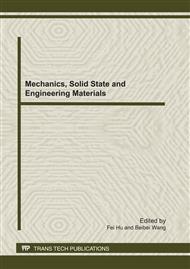p.174
p.181
p.186
p.194
p.200
p.207
p.214
p.219
p.224
A New Hole Filling Algorithm in Space for Triangular Model
Abstract:
Aiming at filling the holes which were generated from uncompleted point cloud data in reverse engineering, a new hole filling algorithm in space is presented. Firstly, the holes boundary was identified and pretreated, and the hole boundary feature datum was established and the boundary was projected on it to form a projection polygon. Secondly, the smallest angle of the projection polygon was found out to determine the corresponding boundary point as the mesh growing point. The original hole was covered by the new meshes covering and then filling algorithm was completed. Finally, the neighborhood points of hole boundary vertex were selected as the sampling points for the least squares fitting adjustment of new filled vertices position, which aims at the preparation hole filled result. Examples are given to prove that the method has good accuracy and stability of the hole filling.
Info:
Periodical:
Pages:
200-206
Citation:
Online since:
July 2011
Authors:
Price:
Сopyright:
© 2011 Trans Tech Publications Ltd. All Rights Reserved
Share:
Citation:


